Interview: Peter Marsters of Fervo Energy, Enhanced Geothermal Pioneer
24/7 clean baseload power!
Peter Marsters is the Senior Market Fundamentals Manager at Fervo Energy, America’s leading enhanced geothermal clean power startup. Here’s an action urging Congress to keep the tax credits supporting geothermal innovation1.
In the interview below, this writer’s questions and comments are in bold, Mr. Marsters’s words are in regular text, and extra clarification (links, etc) added after the interview are in bold italics or footnotes.
I am super excited to be talking with you today! I've written about Fervo a lot over the past couple years in my newsletters. I'd love for you to just tell me about your journey to Fervo, how you started working with them, and the journey to the amazing work you're doing today at Cape Station.
I was in the policy space for a long while and was just kind of frustrated about either writing papers or seeing how hard it is to get anything done on policy. I wanted to go try my hand at putting steel on the ground, so I joined Fervo Energy about four years ago on our development team. We've grown by maybe five times since I've joined and we are now out drilling and creating electrons. Fervo is a great team and geothermal really is the right resource for the right time.
Next generation geothermal is very cool. To summarize, the difference between traditional and next-generation enhanced geothermal is access to surface area of hot rock. What you need for geothermal is two things, temperature and water. There's a lot of areas with hot rock, but not the ability to move water in the subsurface. This is what limits traditional geothermal. What we at Fervo can do is essentially design our own reservoir and flow water through any hot rock. This opens up our ability to access significantly more geographies than you could in the past, right? Now, we can engineer it. And that's really what unlocks geothermal as the scalable resource going forward.
And we will need a scalable resource to meet the needs of the power grid going forward. It really astounds me how the power grid now is very different than it was 10 years ago, with very different needs. First, we're in a world where our demand is growing after decades of very flat demand growth. It's going to need a lot more energy.
Second, you layer in retirements; we have power plants retiring for environmental and cost reasons. We have gigawatts of coal and other resources retiring, and there is just a huge amount of supply retiring that we need to replace.
Finally, on top of those retirements and replacements, we need to get to net zero emissions. Until we get to the net zero, the world is going to keep warming, right?
Putting this all together, it really is astounding how much new power we will need. In California, which I think does a very good job of putting its money where its mouth is in terms of its climate commitments, the planned growth there is something like 60 to 70 gigawatts in the next 10 years. That's roughly on the order of magnitude of their current installed capacity. The scale of demand can't be overstated.
This is where enhanced geothermal comes in; it is a resource that has the technical potential to meet the demands of the new grid, and it operates at night when solar is down. It is available 24/7 and it is clean. It doesn't have any emissions. It's the right resource at the right time.
For next generation geothermal, we utilize existing technology that leverages a significant amount of technology, like horizontal drilling, from oil and gas. If there's an industry that is used to scale and solving problems at scale, it is oil and gas.
Yes, absolutely. I am super, super excited about this, because you are, like you said, already producing electrons. You’re signing commercial deals. You're playing in the real-world market. So one thing I want to talk about is: how fast can this grow? You mentioned California's planning 60 to 70 gigawatts of new capacity in the next 10 years. China recently built over 90 gigawatts of solar in one month. There is potential to grow much faster.
In part because you use some existing technology and have some bipartisan support, I'm really, really hopeful that we can get to something at least within a couple orders of magnitude of solar-in-China level growth for geothermal-in-America in the next 10 years.
So what does it take to get a geothermal rig on the ground? How much does it cost to build one? How long does it take? Can you use off the shelf parts from the oil and gas industry. Are the new steel tariffs, if they stick around, going to harm you? What are the physical components it takes to make a geothermal well a reality? The new Sugarloaf well, what did it take to make that happen?
For Fervo, as you kind of mentioned, we do have an operating commercial asset in Northern Nevada, and that is a two-well system that has been operating over a year and operating well. We're out of the lab and are developing at commercial scale. Our north star is to design systems that can be scaled. That means systems that have aspects like modularity, so you don't have to build something custom for every project. That is essential to lowering costs and coming down cost curves. Once we get an optimized design, it’s really just copying and pasting that across as much hot rock as there is.
We face similar issues to other energy developers. Like interconnection queues, which I'm sure you may have heard of.
Oh, I've written about them, yeah.
The power grid is an incredibly advanced machine that is designed for reliability and stability, but the other side of that coin is that it’s not designed to change quickly. Bringing on a lot of new power is not something that is conducive to how existing utilities operate. There's something like two terawatts of power projects sitting in the interconnection queues right now waiting to be built.
More than all we have! We have ~1.3 terawatts total installed capacity in the U.S.!
Exactly. And, you know, not all of those will show up. Some queue positions are speculative. It's just going to take time to both run the studies needed to understand how the new power coming along fits in the grid, and then actually going out and building new transmission, new substations, the infrastructure required to move all the power we need to the demand centers, like cities.
And that's really what takes time. We are relying on legacy infrastructure and we need to grow and right now it's very hard to build things, regardless of whether it's a power plant or transmission line or whatever. It'll all have the same kind of limiters, whether it be things like permitting, which can take a while, or simply just coordination among many stakeholders, which also can take a long time.
The way we see it, we're scaling as fast as external limitations will allow us. If there's interconnection capacity and capital, we can take it larger. Project Red in Nevada is roughly three megawatts. Our Cape Station project in Utah will have 100 MW coming online in 2026 and 400 MW more coming online in 2028.
We want to grow this technology across the world at the scale of gigawatts!
This really resonates with a lot of what I'm writing. I wrote an impassioned article last year urging climate groups to accept the Manchin-Barrasso bipartisan permitting reform compromise and help build some of that stuff in the interconnection queue before it was too late. And they did not, and it became too late, and now we don't have that.
This is where data centers come in, right? You're already signing some deals with some of the major U.S. tech companies because data centers, they are a demand source that can move to you. You don't always have to build a power line to them. They'll build a data center wherever there's cheap power. So can you tell me about how the AI data center boom impacts that scalability picture?
Yeah, I think there is some flexibility with that load. To step back, you know, AI and the associated data center boom is real, on the order of gigawatts. Speed is a huge, huge priority for these hyperscaler developers. So the real value is if you can get gigawatts online as soon as possible, that's the place to be in the market.
They still have locational constraints: they want access to the grid, access to fiber, they want reliable power. Behind the meter operations are actually pretty complicated and expensive. So they’re waiting in the same systems for interconnection upgrades and the ability to deliver. It's very hard to build gigawatts or get gigawatts of new power supply into a load center, like say a big city center, but building gigawatts for data centers has a little bit more locational flexibility.
We do have a deal with Google for a new northern Nevada project and it's a very nice match. Think, if you are a data center looking for clean energy at the scale of gigawatts, you look at all the possibilities. Nuclear is still pretty far away in terms of timing. Natural gas is booked up with a huge delay on new turbines for the foreseeable future. Geothermal is ready to scale and is the solution, as we see it, over the next five years or even further out. It is the immediate solution for the immediate demand coming from data centers.
If the current budget megabill ends up repealing the investment tax credit for clean energy, how will that impact your scalability and profitability?
We are available 24/7, reliable, and utilize a bunch of U.S. domestic industry strengths, namely drilling expertise and I think that kind of helps resonate with policymakers in both parties.
In terms of policy, there's so much uncertainty that we kind of run scenarios, plan around, try to make sure we're covered under all cases in terms of our future development. And then we just have to wait and see, because there is a fair amount of unpredictability that's coming from the policy world these days.
That is an extremely diplomatic way of putting it.
Yes.
What does that knowledge-transfer from the oil and gas industry look like? I mean, hiring engineers with drilling expertise, that's pretty clear. What is the supply chain like for your Sugarloaf Well at Cape Station? Are you plugging into existing suppliers that generally supply the oil and gas industry?
We're plugging into existing supply chains for equipment and labor for the subsurface industry of oil and gas. There's some slight differences between our requirements and those in oil and gas. Our hole size tends to be a little larger than a typical oil and gas well. But for the vast majority of our work, it's off the shelf technologies and processes. There’s something like 550 drilling rigs operating in the U.S. today. We can use the same technology to go drill geothermal!
The amount of sophistication and technology investment that the oil and gas industry has put into drilling is astounding. Decades and decades of billions and billions of dollars of investment. We rely on fiber optics, where you put down fiber optic cable and it can essentially sense and detect any changes in pressure in the subsurface. You get these very granular images of what's going on down there. And with that, we can use that to optimize our subsurface design.
Back to where I was headed with this: so we've engineered the reservoir, right? We're starting to flow water down. That flows through the subsurface. It heats up. We actually keep it as water, we don't flash it into the air and turn it into steam. What happens is that water boils a secondary working fluid that we then run through a turbine and use that to generate electricity. There's no steam emissions and water isn’t lost to the atmosphere. It's all a closed system, essentially.
The surface equipment, those turbines, they're called Organic Rankine Cycle turbines. They're used extensively across the world for things like combined heat and power, geothermal, and other industrial applications, basically. We are leveraging that side of the supply chain to expand geothermal.
Those two components, the subsurface oil and gas experience and then the surface experience with ORC, Organic Rankine Cycle turbines, allows us to scale to gigawatts. That is the plan.
This is just absolutely fascinating. What are your next steps? What are your expansion plans? I know there's a ton of uncertainty right now, but you've already started. You've got the site in Nevada, you're building out Cape Station in Utah, you signed a long-term deal to provide power to California. Are you even talking about going East of the Mississippi yet? I saw a map in the Nature paper on geothermal recently that said parts of the eastern U.S. should be cost competitive for geothermal by the late 2020s. Where are you guys going next? What are your one-year and five-year horizons?
There's a couple key levers you want to think about when we're going forward.
One is depth of resource, right? A lot of your costs will come from drilling and the deeper you have to drill, the more expensive, in general, the resource will be. Where heat is closer to the surface, that'll be the lower hanging fruit, first to develop. Which will be a good portion of the U.S. West. Oregon, Washington, California, Arizona, Utah, Colorado, New Mexico, essentially the entire Western United States is favorable. Then you start to look other places.
Fervo comes down the cost curve as we scale. You know, very similar to the solar industry, where as you scale, your per unit costs come down. We expect to see the same thing, and get the benefit of learning curves. As we come down the cost curve, and the demand for clean, firm power increases out East, it may be sooner than you think that we start looking in that direction!
In the near term, we're very, very focused on Cape Station in Utah. One of our values is to do what we say we're going to do, and making sure we deliver on our first big utility-scale project is our North Star. But it isn't too far away from a world where you see geothermal applicable in areas that people wrote off in the past.
I am super excited about that! Let’s talk about the policy side. Obviously with the federal government, the big thing is the investment tax credit, what's now being decided. What do you need from state-level policymakers to provide a supportive legal, regulatory, and permitting structure? You want to build a project in state X: what do you need to make that happen?
Yeah, it's a very good question. I think some of the more powerful levers we've seen are procurement orders. California essentially said that their utilities need to go out and find a resource that looks exactly like nuclear, high-capacity factor and emissions-free, and that ended up being geothermal. That was a very helpful policy in terms of what states can leverage. As you say, the states just have different kinds of constraints than the federal government.
One thing states or cities could do is access to some low-cost financing, municipal bonds or something of the like. Access to cheaper capital can be very helpful for us. Like many other renewable developers, all our costs largely come up front, so the cost of capital ends up being extremely important to us. Then there’s permitting or regulatory policy.
Will the recent Supreme Court decision on the Uinta County case help you at all? That limits the scope of NEPA reviews. Have you been at all concerned about NEPA lawsuits?
I'm quite interested in the emerging Abundance Agenda, which makes a very strong case that metastasizing environmental review lawsuits have counterintuitively become a major problem for environmental goals because they make it incredibly hard to build housing, clean energy, and public transport.
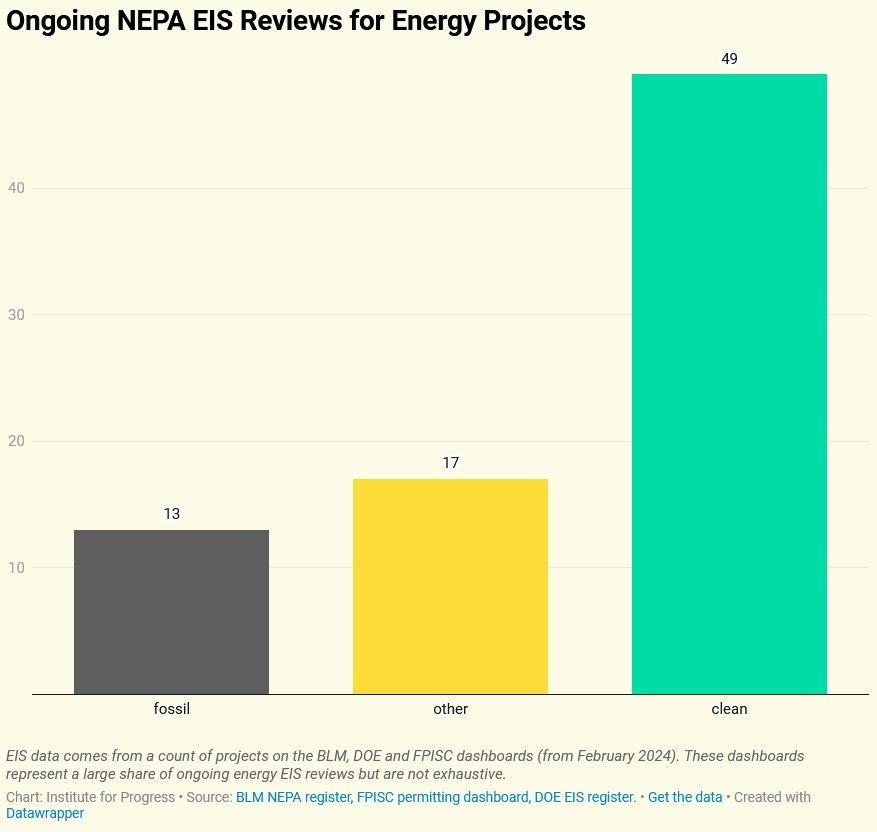
I think NEPA categorical exclusions (CATEX) for geothermal, is immensely helpful. As I mentioned, anything to shorten the development cycle is helpful, because our cost of capital is such a crucial component to our project costs.
A lot of energy nerds are really excited about enhanced geothermal, but I feel like the general public doesn't quite know that this is a thing yet. What high level takeaways do you want the public to have?
In terms of the public sentiment around geothermal, broadly, we still have the first-order kind of work to do. We need to differentiate between geothermal-source heat pumps, residential-scale geothermal, and our utility-scale geothermal, which are two very different processes. With residential, you drill a couple feet into the ground, and what we are doing is drilling miles down. Completely different.
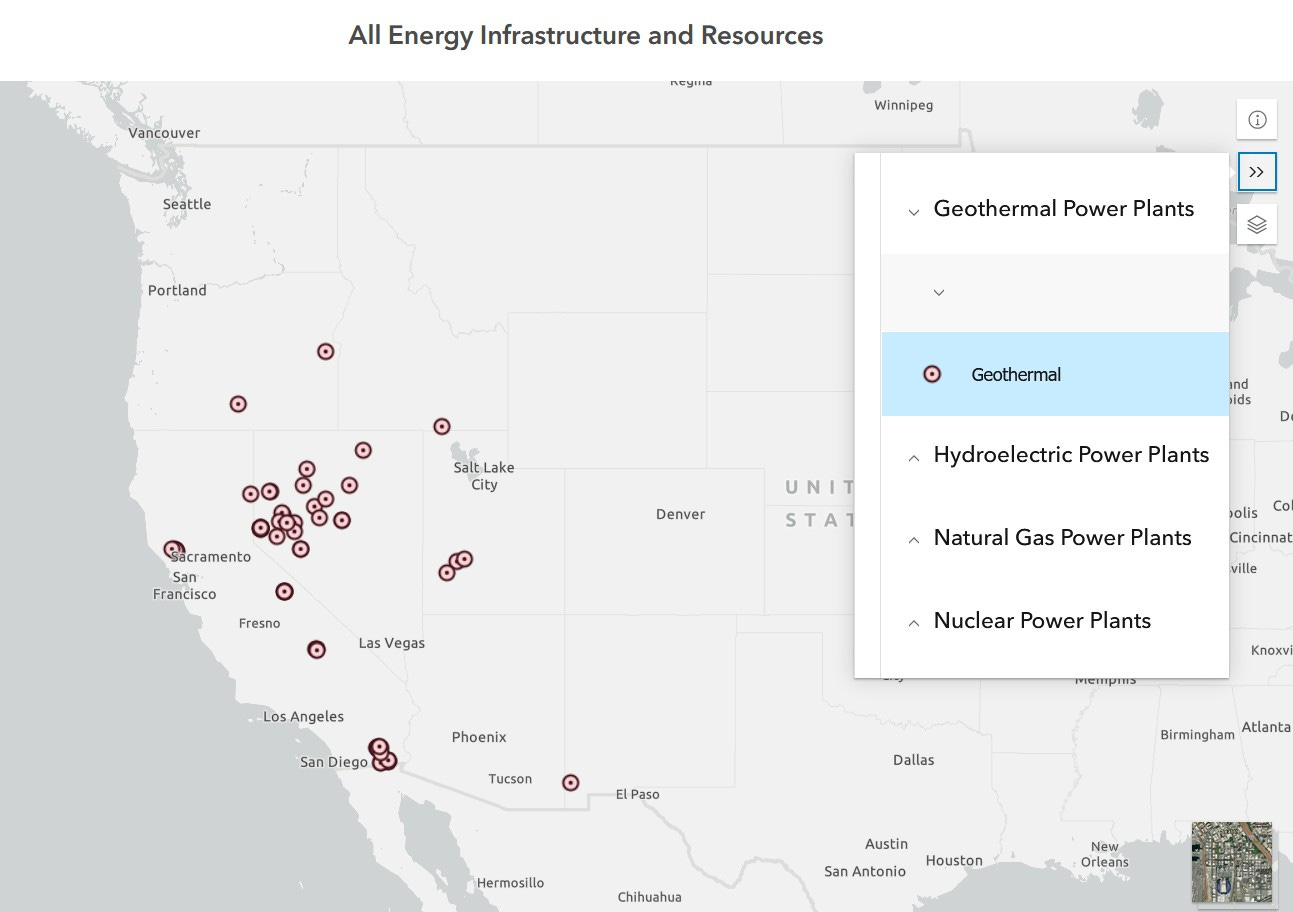
In terms of utility scale development, there was a significant amount of geothermal development in the 80s and 90s, and that tapped out the easy areas for traditional geothermal, so I think people kind of forgot about it.
When they need new supply, geothermal may not be the first thing they think of. We are changing that, especially as we put steel in the ground and get hundreds of megawatts online.
That's been a communications effort as well, where it's like, “Oh, actually, if you're looking for a new supply, geothermal is now an option. And an option available today.”
It's a nice place to be in terms of bipartisanship. There’s that transition from oil and gas to geothermal — you can take fossil fuel workers and have them work on some oil and gas project one day, and then the next day come out and drill a geothermal well. If you are concerned about equity in the energy transition, geothermal is a very nice resource for that.
It also has the benefits of being a compliment to wind and solar. We'll need everything we can get to solve the climate crisis, but geothermal fits very, very nicely in terms of providing reliability, emissions free energy, especially when the wind isn't blowing or the sun isn't shining.
Yeah, that clean baseload power, that is incredible.
There have been recent reports showing that solar plus batteries is increasingly able to provide 24/7 power or very close, but the U.S. is massively self-sabotaging on batteries right now.
China's got a massive lead on battery industry development already, and we're unfortunately screwing up our own hard-won domestic battery supply chain with tariffs and tax credit chaos.
But geothermal kind of plays to U.S. strengths. This is something where a lot of people who currently have big stakes in the oil and gas industry, from the individual drilling engineer to the company that sells rigs, can see a future for themselves in a net zero world. I think that just the existence of you guys is really valuable on a sort of political and sociological level.
It’s not a one-to-one analogue, but there are cases, like in Minnesota, where when coal plants have been shutting down there's been efforts to develop renewable stuff right on that same site because there's already power lines going to it. In a similar way, would you potentially be prioritizing existing oil and gas drilling towns for clean drilling, because there's already that local basis of expertise and probably a friendly local government and stuff like that?
It's a good question, one that's often asked. There's some synergies there. We like to rely on the immense amount of data that oil and gas developments gather in the subsurface. But the conditions for oil and gas, just like what happens geologically, is pretty different than the conditions that lend themselves to good geothermal. So there doesn't tend to be significant amounts of overlap. That's not to say that there isn't any.
And people often think of, like, “Oh, could you reuse oil and gas wells or geothermal?” A difference there is just the size of the well. It wouldn't be a shortcut to developing a geothermal project.
That being said, you know, places like Texas and Louisiana do have geothermal potential, and there are synergies that you can see developing. California has a fairly robust oil and gas industry and significant geothermal potential. It's a very robust narrative in terms of trying to think about how you manage the politics of energy transition.
What was the key development between the 1990s and 2020s that led to enhanced geothermal attaining this scalability? Why didn't this happen as part of the shale fracking boom in 2013? Why is this happening now and not earlier?
Yeah, very good question. Essentially, the shale gas boom in the U.S., the two key technologies there were horizontal drilling and hydraulic fracturing. That really didn't take off until post-2009. We’re really taking what the oil and gas industry has perfected during the shale boom and applying it to geothermal. That shale boom was a revolution in energy markets. It totally upended everything. We’re using that same technology in another part of the energy market and power sector. But yeah, it really is the ability to commercialize and scale horizontal drilling and hydraulic fracturing.
That makes sense. And then a lot of folks from the oil and gas industry moved into the geothermal field. It takes time to scale stuff up. Fascinating.
We just desperately need more clean energy. But unfortunately, and this one thing I've really tried to push back against, there’s an increasing set of “green on green” battles, NIMBYism versus environmentalism, where you get people claiming to care about the climate crisis but opposing renewable energy projects for incredibly parochial and short-sighted reasons. And, you know, I'm very much on the we-need-to-build-lots-of-green-power-now team. But there's going to be some portion of my audience that's going to freak out if they hear “hydraulic fracturing.” Could you give me your elevator-pitch explanation on why this is totally safe and will not cause earthquakes or poison groundwater or do any of the other bad things that people accuse the shale gas boom of doing?
Yeah. If you think about groundwater, we’re not drilling for hydrocarbons. We don’t interact with hydrocarbons so you’re not worried about contamination.
Seismicity is also something we track and is a potential risk. We do a very thorough risk assessment before we develop, understanding what the historical seismic risk has been and what the future seismic risk could be, and we orient our operations around that. If something is potentially unsafe, we don't do it. There are established processes and plans in place to minimize that risk.
What else do you want to share? What do you want people to know? What should the climate movement know? What should the person on the street know? What should policymakers know? What is information that you want more people to have about Fervo Energy and enhanced geothermal in general?
Yeah, very good question. I would say that geothermal is here today, ready to scale. It is essentially the resource to meet the challenges of today's grid. That's the overall point. It's a way to scale clean energy using existing U.S. industry, ready to scale, that can be applied pretty much anywhere, eventually.
Spectacular! I try to use my writing to assist the scale up of clean power in the United States, and you guys are a really promising way to do that.
I'm very bullish on the combination of what the technology is, its ability to deliver on scale while being clean, and its ability to kind of navigate some of the politics that are going on today and be a bipartisan resource. It has a lot of value.
It was a pleasure talking with you, Sam.
Thank you so much!
Thank you.
This is a very fast-moving situation - at the time of writing this interview this was still up in the air. It may be resolved by the time you read it.





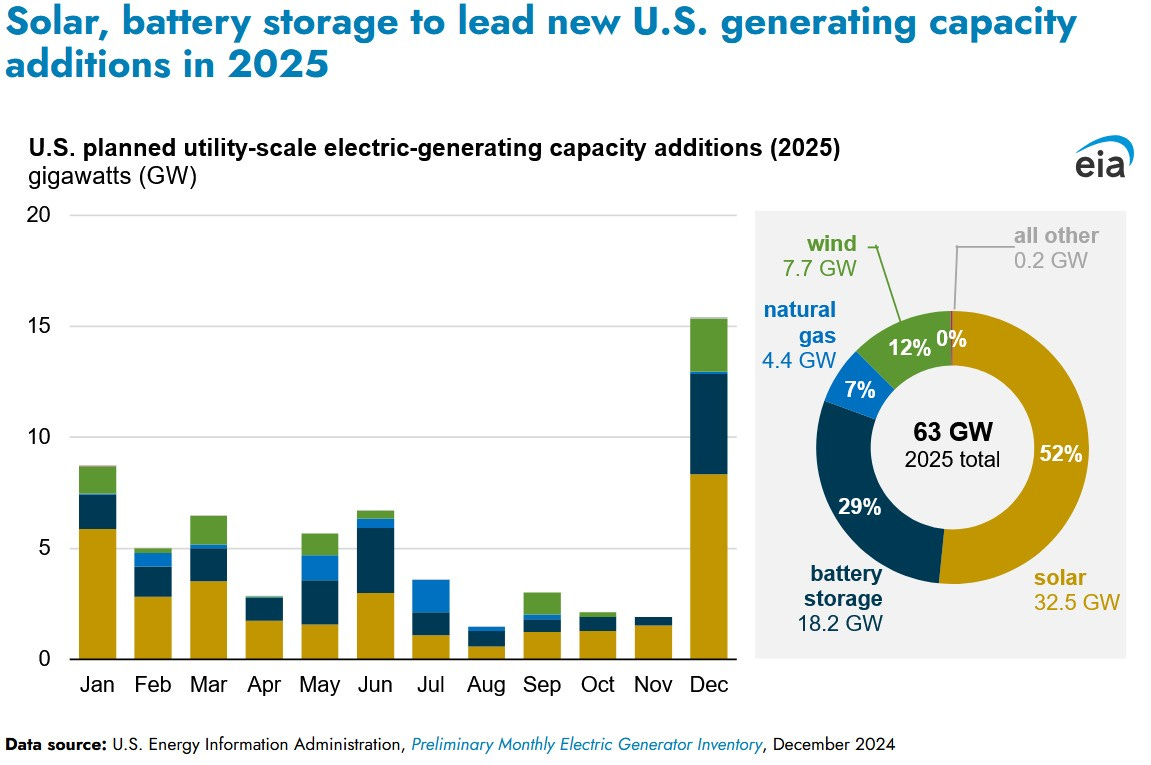
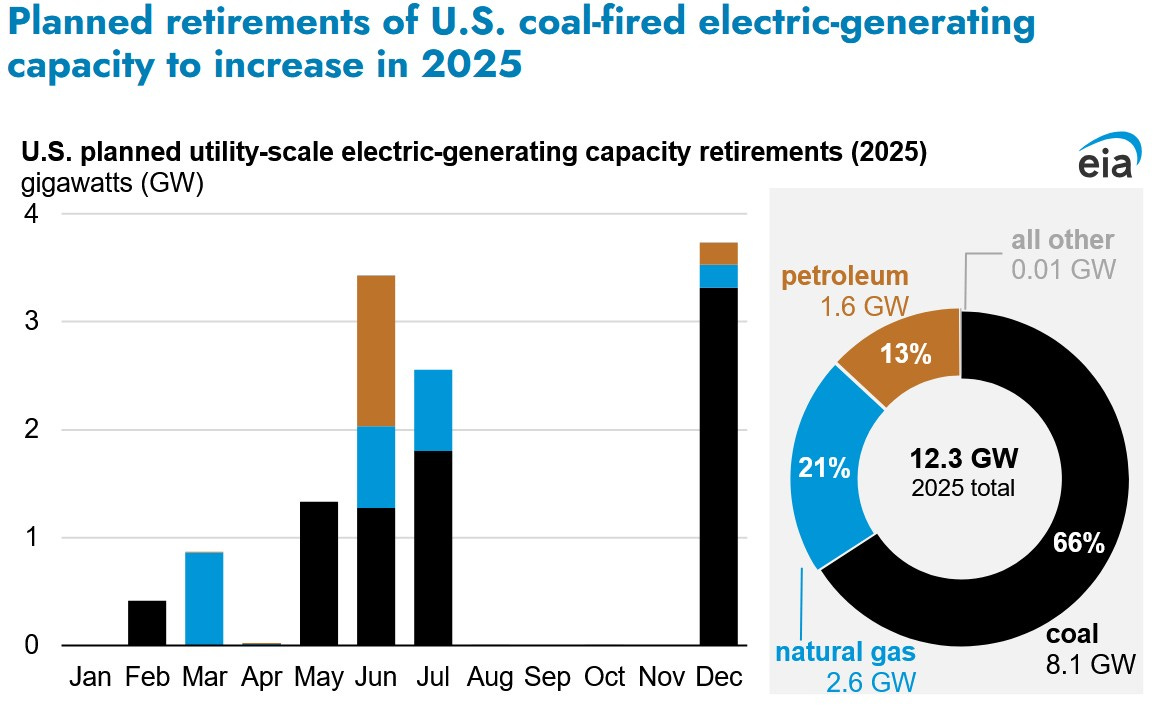


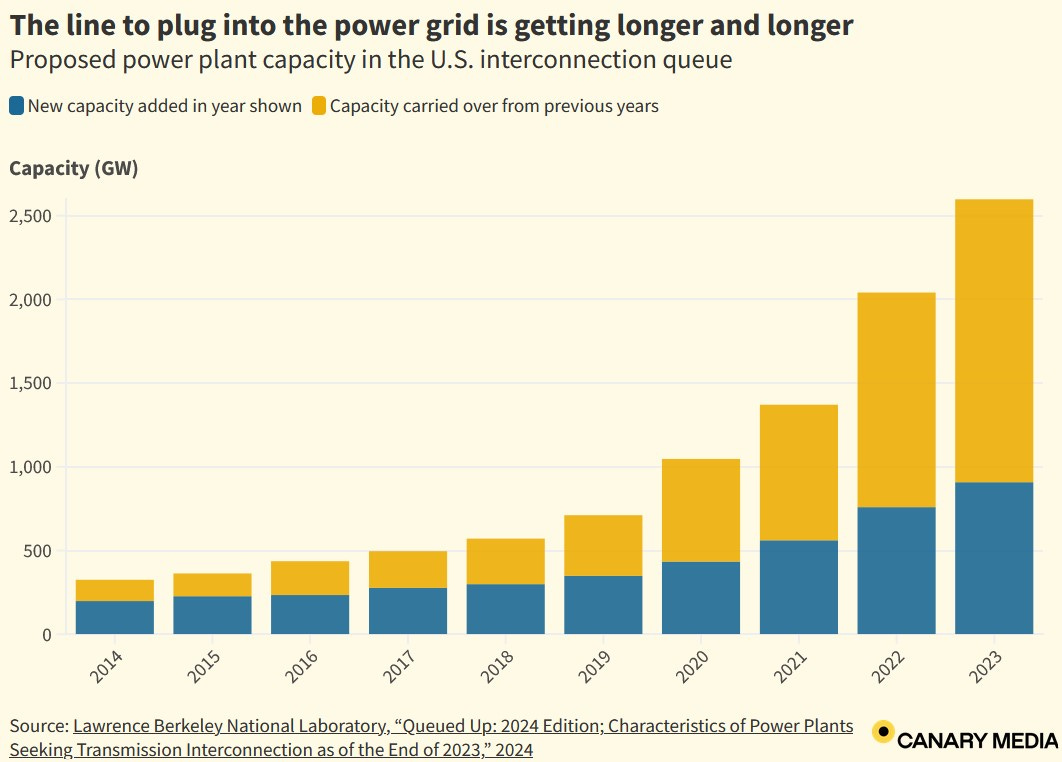
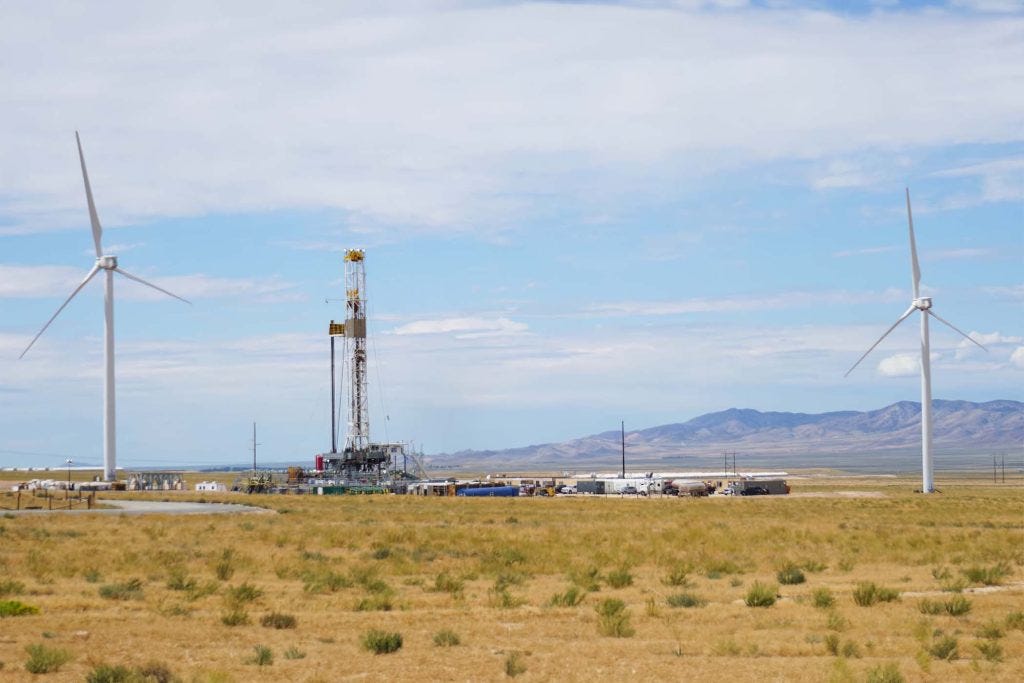



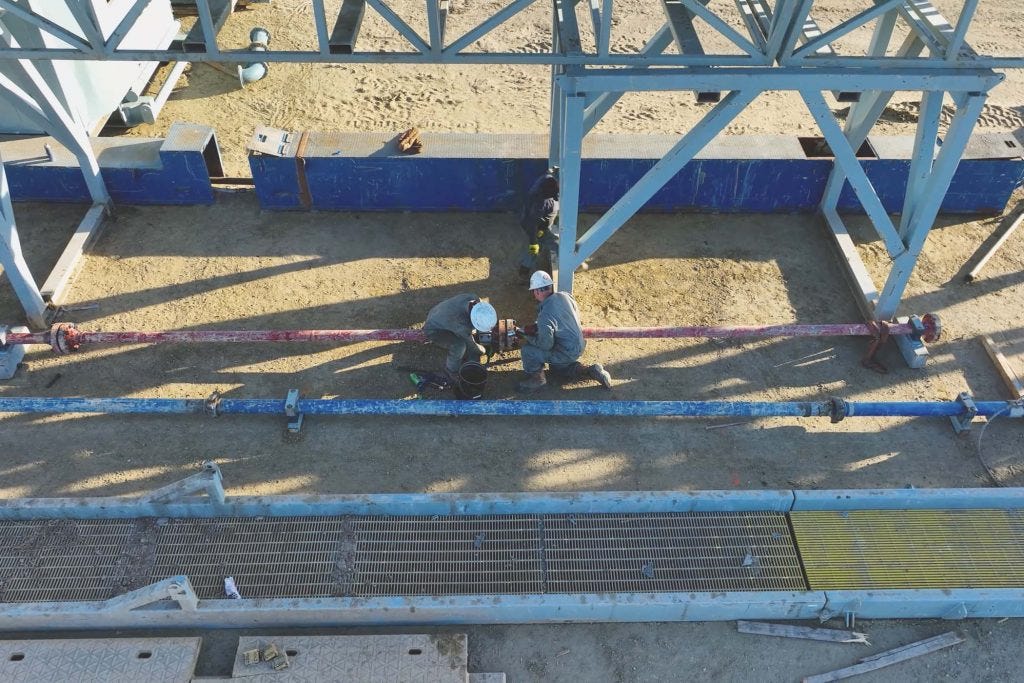

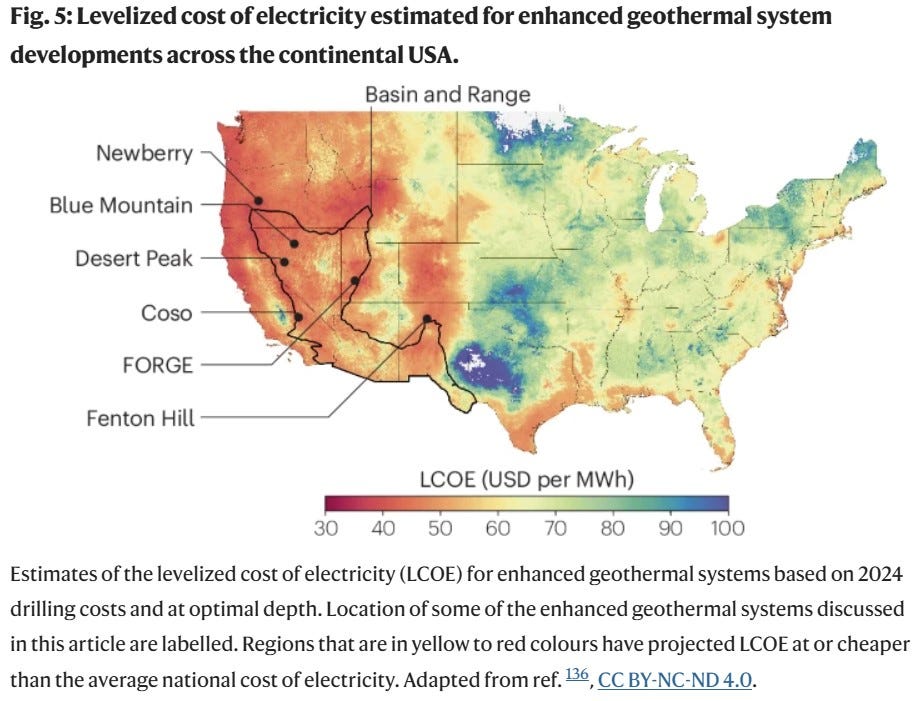


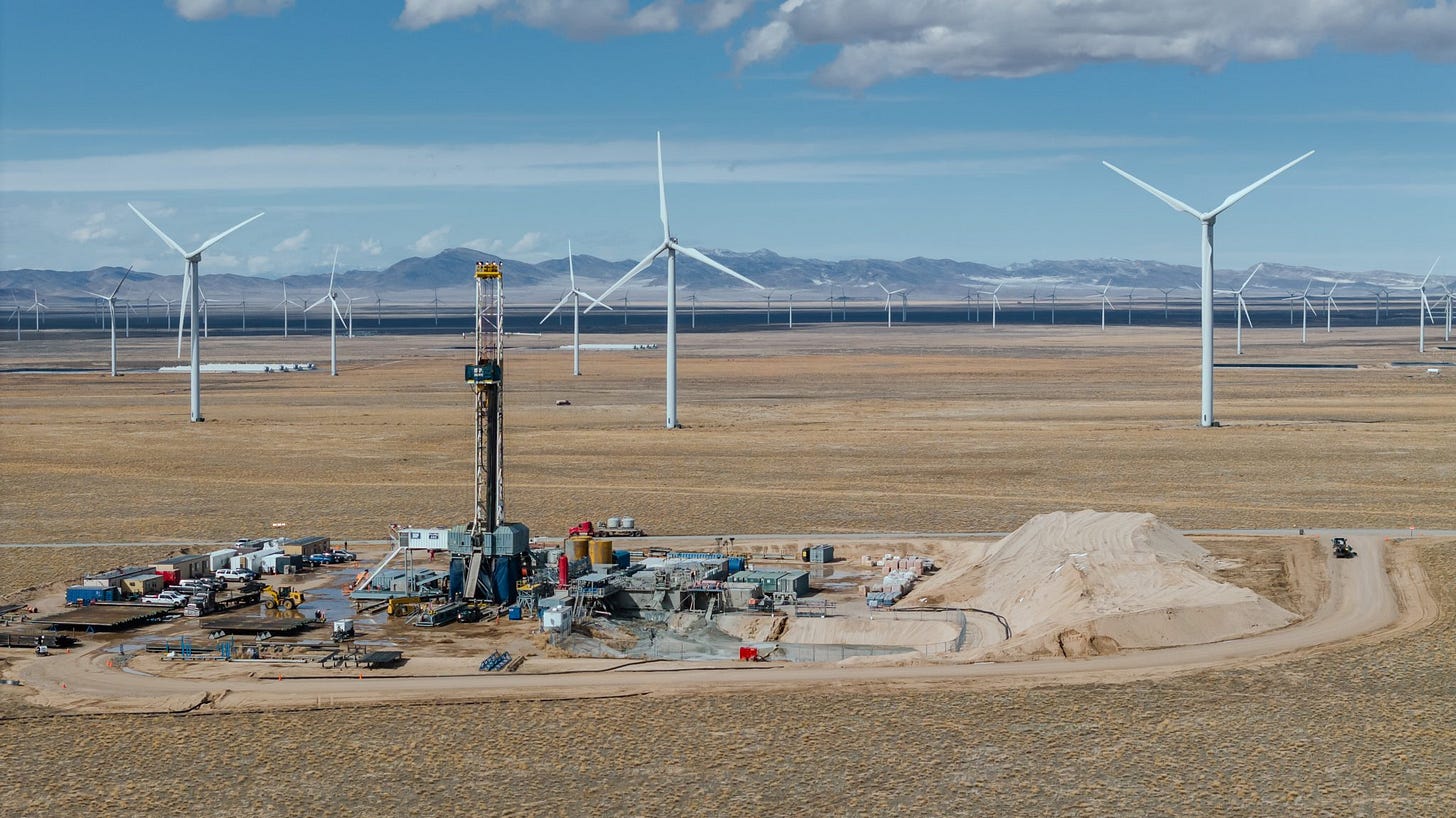
This is an uplifting story on many counts. The map in figure 5 serves as a heat map related to geology. I visited the Svartsengi Geothermal Power Plant near the Blue Lagoon in Iceland in 1997. It was mind blowing. Unlike Iceland which sits on the mid-ocean ridge (MOR) we don't have the easiest access to hot rocks. We also don't have the drawbacks of having infrastructure overrun by fresh lava flows as has happened recently. I was surprised to learn that California has geothermal plants in The Geysers region north of San Francisco that supply something like 20 percent of the state's renewable energy. Incidentally, indigenous people have been using the hot springs there for some 12,000 years. Alaska has 97 known thermal springs and they have been generating from a geothermal plant since 2006.
If CO2 is used as the working fluid geothermal power will end up being a major Carbon sink as the CO2 will react with any available basic igneous minerals - basalt, periodite, ... If CO2 has a price associated with its release, the consuming geothermal plant should be credited for its removal of the CO2. Adding CO2 to the working fluid also helps reduce fouling by deposition - if I remember properly, this is actively used in existing geothermal plants in southern California.